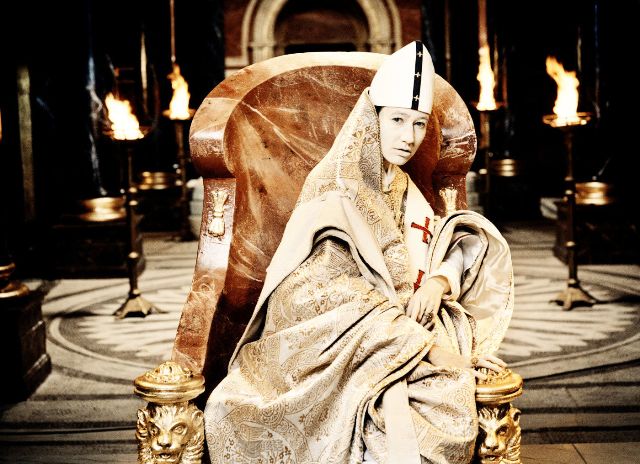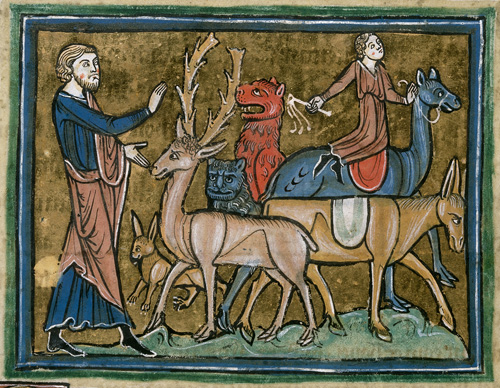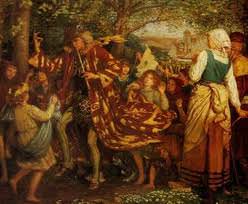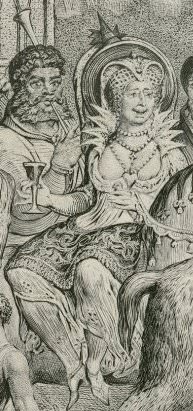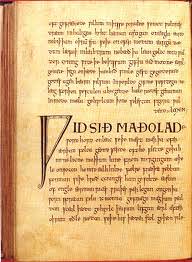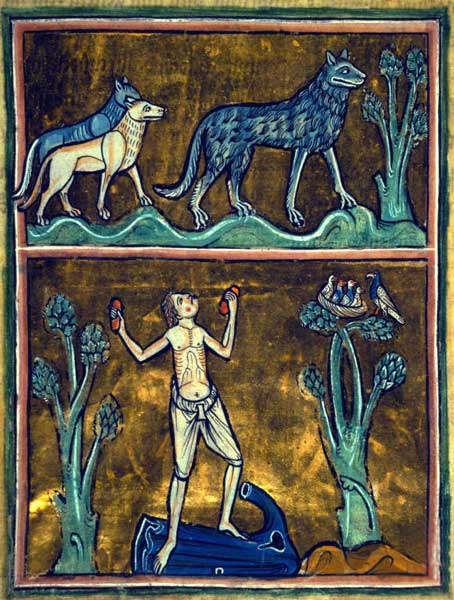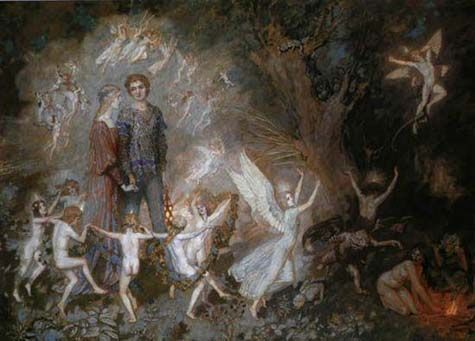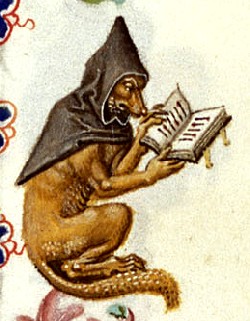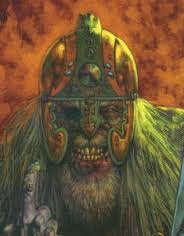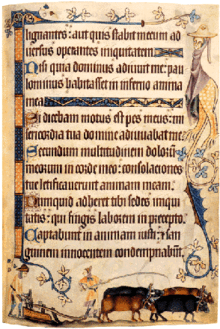The Challenge of Folklore to Medieval Studies
When folklore began to emerge as a valid expression of a people during the early stages of national romanticism, it did so alongside texts and artifacts from the Middle Ages; it was only as folklore began to develop its own methodology during the nineteenth century that the fields were distinguished.
Movie Review: Pope Joan – Medieval Legend Comes to Life Onscreen
Released in 2009, also under its German title, ,Die Päpstin,, ,Pope Joan’ recounts the medieval legend of Johanna von Ingleheim, a woman who disguised herself as a man, lived as a monk, and eventually went on to become pope in the ninth century.
Nourishment for the Soul – Nourishment for the Body: Animal Remains in Early Medieval Pomeranian Cemeteries
Late medieval sources clearly refer to souls, which in traditional folk beliefs were periodically returning to feed and warm themselves by the fires made by the living. This kind of conception can be merged with Slavic eschatology. There is multiple evidence to confirm that belief some form of spirit or soul was spreading amongst the people, who in the early medieval period, bordered directly with Pomerania.
The Legend of the Pied Piper in the Nineteenth and Twentieth Centuries: Grimm, Browning, and Skurzynski
This paper examines the changes that were made in the literary telling and retelling of the story of the Pied Piper during the nineteenth and twentieth centuries, comparing the folktale “Die Kinder zu Hameln” (1816) by Jacob and Wilhelm Grimm, the poem “The Pied Piper of Hamelin”(1842) by Robert Browning, and the book What Happened in Hamelin (1979), by Gloria Skurzynski.
Seasonal Setting and the Human Domain in Early English and Early Scandinavian Literature
Seasonal Setting and the Human Domain in Early English and Early Scandinavian Literature Paul Sander Langeslag University of Toronto: Doctor of Philosophy, Centre for…
Auðun of the West-Fjords and the Saga Tradition: Similarities of Theme and Structural Suitability
Auðun of the West-Fjords and the Saga Tradition: Similarities of Theme and Structural Suitability Josie Nolan (Trinity College Dublin) Vexillum, Vol.3 (2013) Abstract…
Wild woman and her sisters in medieval English literature
The subject of this work is the concept and figure of the Wild Woman. The primary focus will be on various forms this figure assumes in medieval English literature: Grendel’s mother—the second monster Beowulf faces—and Chaucer’s Wife of Bath, along with other figures.
Saga Motifs on Gotland Picture Stones: The Case of Hildr Högnadóttir
This article will only examine one of these legends, namely the ‘Hildr legend’ in the context of two of these stones, lärbro stora hammars and stenkyrka smiss . An attempt will be made to place the images in a larger context than has been done before, and by doing so to strenghten the probability that they were indeed intended to refer to the original Hildr legend.
Contemplating the Evolution of Medieval Double-Entendre Literature
The linguistic composition of the Exeter Book Riddles supports this, and in fact, the genre became a refuge for contemporary colloquial speech which was seen as coarse and lower class within the ideologies of Christianity and Germanic heroism.
The historical basis of Lycanthropism or: where do Werewolves come from?
Werewolves, Lycanthropes or Man-Wolves appear in many German, French and Scandinavian stories. Nowadays there exists an image of these creatures, which combines almost all the aspects of the werewolf-myths around the world, that was brought to us by Hollywood.
Faerie Folklore in Medieval Tales: An Introduction
Defining the term ‘faerie’ is not easy; some definitions include only specific, pre-Christian types of mythological creatures while other definitions include all of the spirits, angels and supernatural animals as well as the souls of the dead. I will take a middle road and include the spirits and the souls of the dead, since the dead and the faeries have an intimate connection in the folklore of the British Isles.
Tales of tricks and greed and big surprises: Laymen’s views of the law in Dutch oral narrative
I will be looking at folktales, i.e. popular, international, and (mostly) orally transmitted narratives, varying from traditional genres like fairy tales, fables, and legends to modern genres like jokes, funny riddles and urban legends.
Drauginir: Revenants in Old Icelandic Sagas
It is this humanity in a monster that helps to show why these draugar fascinate us so much. The “others” that exist outside the boundaries of society: the weird old ladies that people label as evil witches, the misshapen, the “freaks” that Tod Browning made famous are funhouse mirror images of ourselves.
“Far-off gleams of evangelium” : a study of how J. R. R. Tolkien’s The lord of the rings reflects the biblical “Kingdom of Heaven”
The findings of this thesis confirm that the values of LOTR and the Kingdom are notably similar, and that the reader of LOTR does indeed derive from it an experience of what the Kingdom ideally is. But all this is “under the surface”, and Tolkien did not impose his Christianity.
Talk to the Dragon: Tolkien as Translator
When Bilbo, and the readers of The Hobbit, are confronted with the dragon, they are in for a surprise, as Smaug’s behaviour is somewhat unusual for a dragon.
Monstrosity in Old English and Old Icelandic Literature
In medieval Europe belief in monsters allowed for corresponding acceptance of the possibility of humans transforming into monsters. In medieval Iceland and Anglo-Saxon England the mixture of Christian and pagan world views and beliefs create a situation where the boundaries are not merely fluid but can be transgressed, in either direction.
Medieval Halloween! Great books for Ghosts, Goblins, Witches & Ghouls!
Some spooktacular reads to celebrate Medieval Halloween!
When a Knight meets a Dragon Maiden: Human Identity and the Monstrous Animal Other
The amount of research into the field of medieval monsters has been growing within the past few decades, but the monster has not always been accepted as a worthwhile topic of serious study
“A Swarm in July”: Beekeeping Perspectives on the Old English Wið Ymbe Charm
At the same time, however, their differing responses to the remedy attest both to the variation of beekeeping practices and the multivalence of Wið Ymbe itself. The fact that two beekeepers interviewed within two days and two hundred miles of each other can respond differently to the charm’s advice on swarms suggests that we reevaluate unilateral assertions regarding what the text might have meant across the hundreds of years that we now know as the Anglo-Saxon period.
The Virtuous Pagan in Middle English Literature
From the first through the fourteenth centuries, a succession of solutions to the problem of these virtuous pagans evolved. For the Early Church, an attractive solution was that Christ descended into Hell to convert the souls he found there.
The Riddle of Gollum: Was Tolkien Inspired by Old Norse Gold, the Jewish Golem, and the Christian Gospel?
I would like to speculate on Tolkien’s sources for Gollum. As a start, it is likely that Tolkien’s conscious sources for Gollum were the same as his sources for ents.
The use of unicorn horn in medicine
The unicorn is unusual among the mythical animals in that people still believed in its existence up to and after the Renaissance.
Vilification of Identity and the Exilic Narrative: The Illustrated Pied Piper Story
This paper situates The Pied Piper story as an exilic narrative, part of a larger repertoire of stories that follow the romantic quest-myth formula, a formula that conveys a totla metaphor for the “journey of life”.
Imagining Samarkand: Fruitful Themes in 13th-16th Century Literature on a Silk Road City
… Samarkand was seen as the last great urban Islamic stop.4 Perhaps because of this, the period between the Arab invasion of Samarkand and the Mongol invasion in 1220 fomented many of the mythologies about the city which will feature prominently in this paper.
Creativity, the trickster, and the cunning harper king: A study of the minstrel disguise entrance trick in “King Horn” and “Sir Orfeo”
What does a hero do when he finds himself in an impossible situation where customary tactics are useless; magic is not in the cards, and divine intervention unlikely? He could give up. Or he could use cunning. In both King Horn and Sir Orfeo, the hero wiggles out of just such a squeeze by using a minstrel disguise entrance trick—a sort of musical Trojan horse for which the enemy’s closely guarded gates swing open in welcome.

